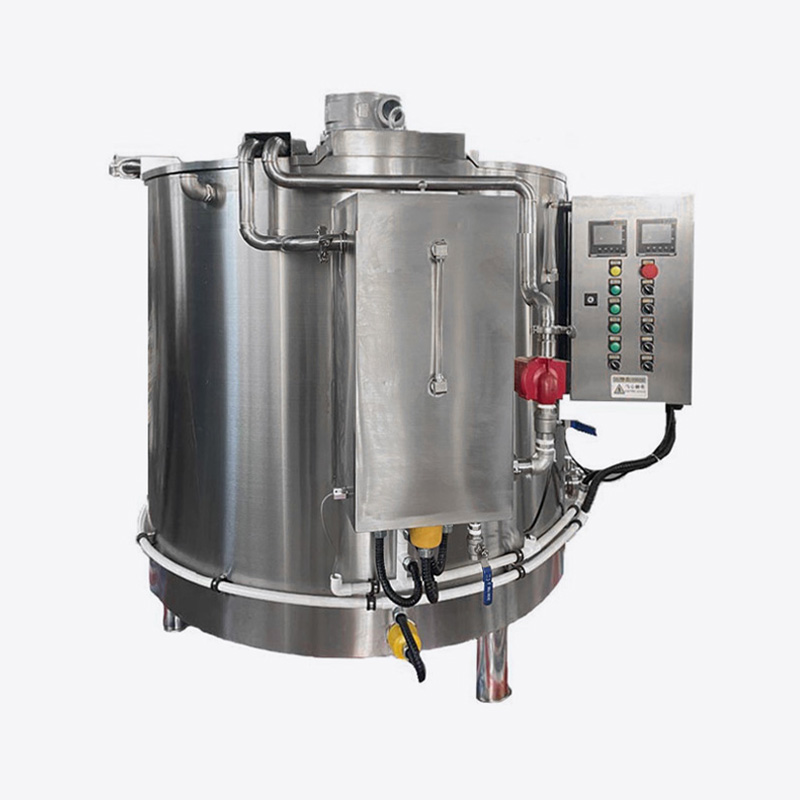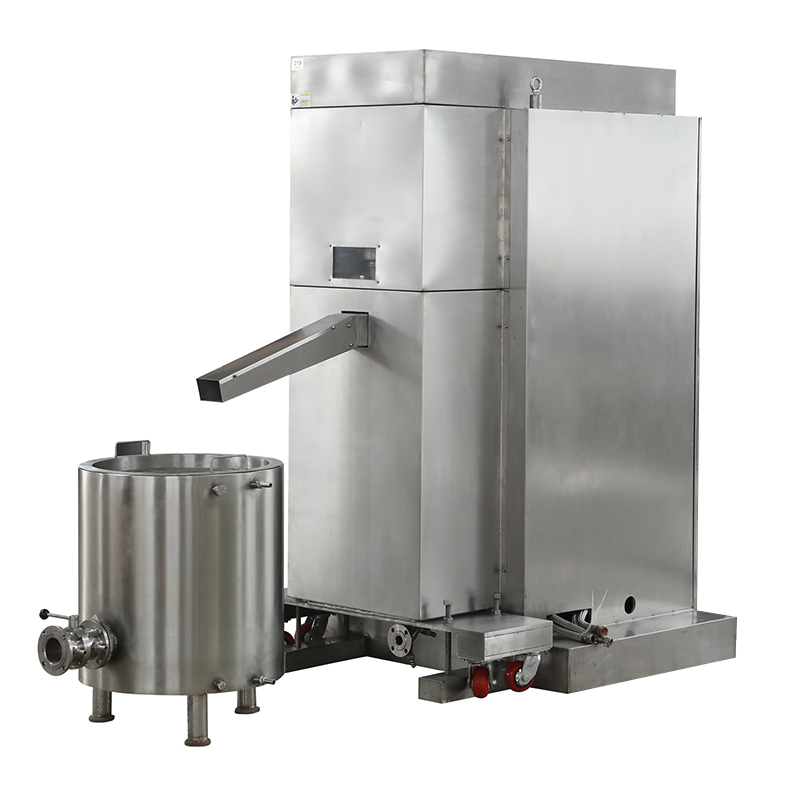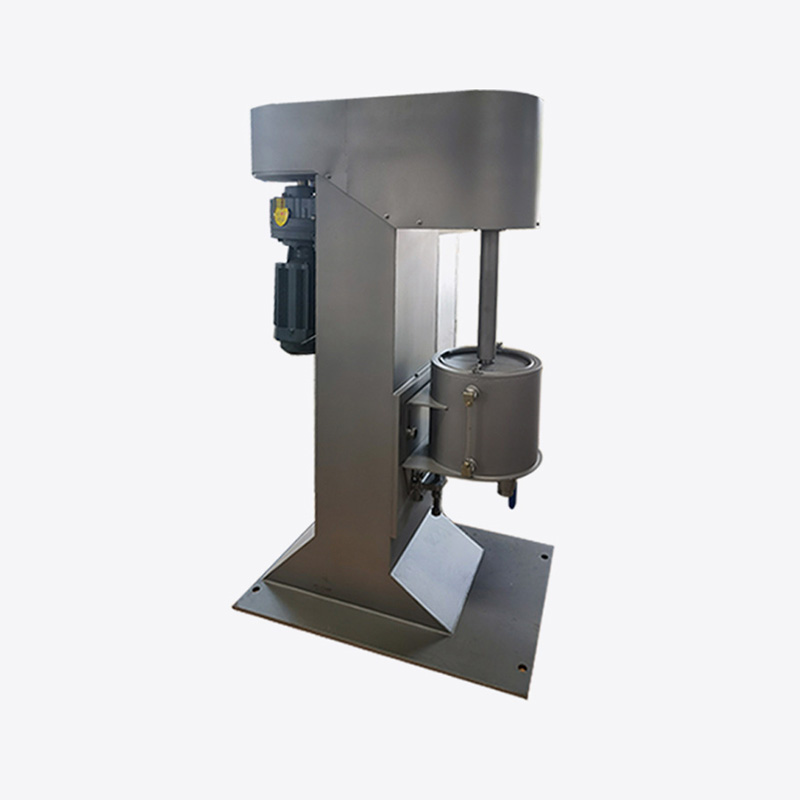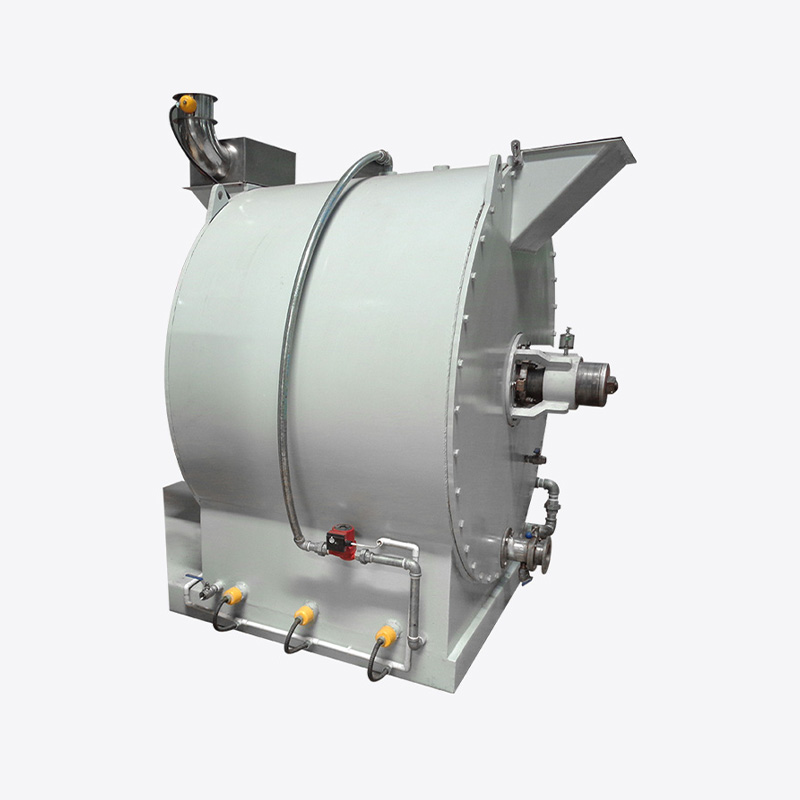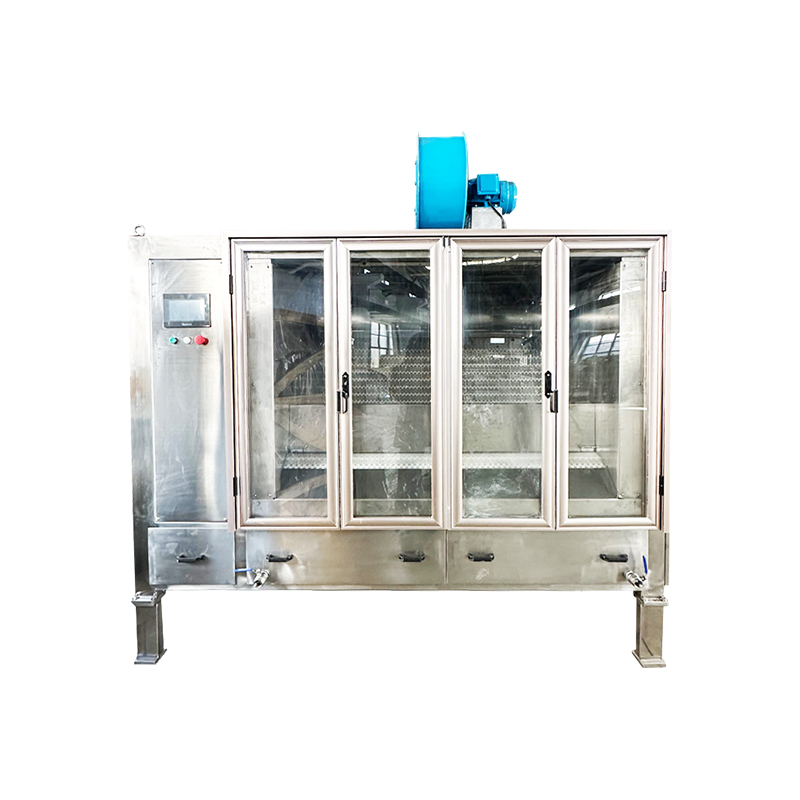What is a Candy Bar Line?
A Candy Bar Line refers to an integrated production system designed to efficiently manufacture candy bars. It is a complete assembly of equipment and machinery that processes raw materials, shapes, coats, cools, and packages candy bars for distribution in the market. The line typically includes various stages such as mixing, molding, coating, cooling, cutting, and packaging, with each step optimized for the specific needs of candy bar production.
Candy bar lines can be fully automated or semi-automated, depending on the level of production and the specific requirements of the manufacturer. These lines are vital for creating consistent, high-quality candy bars in large quantities, meeting both consumer demand and industry standards.
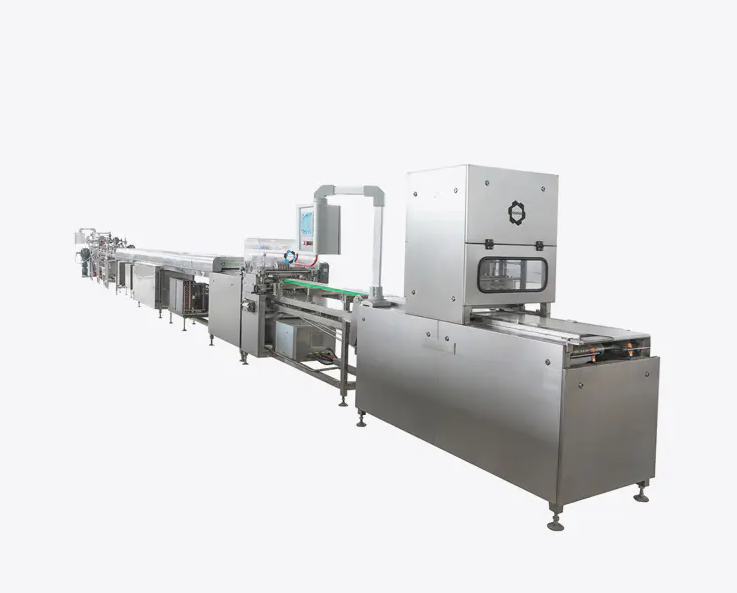
Importance of Candy Bar Lines in the Confectionery Industry
The confectionery industry, particularly candy bar production, has experienced substantial growth, fueled by changing consumer tastes and market demands. A specialized production line plays an essential role in meeting the industry's needs, driving efficiency, and ensuring consistent product quality. Here’s why such systems are crucial:
1. Efficiency and Consistency in Production
The primary benefit of a specialized production system is the increase in production efficiency. These systems can significantly reduce labor costs and ensure that candy bars are manufactured quickly and to uniform standards. Automation minimizes human error and enables businesses to produce large quantities while maintaining quality control, ensuring that each candy bar meets the same high standards in size, shape, and texture.
This efficiency also means that production can run continuously, maximizing output and meeting market demands without excessive downtime.
2. Flexibility to Handle Various Products
Another advantage is the flexibility to produce different candy bar varieties. Whether the product involves chocolate coating, fruit fillings, nuts, or a combination of ingredients, the production system can be adapted to meet these needs. This adaptability is essential in catering to consumer trends, whether it's introducing new flavors, sizes, or healthier alternatives, such as low-sugar or gluten-free options.
With the right production setup, manufacturers can easily transition between different products without the need for entirely new equipment, which saves both time and money.
3. Quality Control and Food Safety
Maintaining a high level of food safety and product quality is paramount in candy bar production. The integrated machinery often comes equipped with advanced monitoring systems that ensure that every stage, from ingredient mixing to packaging, meets safety and quality standards. Automated systems can check parameters like temperature, ingredient ratios, and packaging integrity, which helps prevent contamination and ensures a consistent, high-quality product.
These built-in quality controls also enhance traceability, which is vital for product recalls in the event of an issue. The result is a safer, more reliable product that customers can trust.
4. Meeting Consumer Demand and Scalability
As consumer demand for candy bars increases globally, the ability to scale production becomes crucial. Modern production systems are designed to handle high-volume production efficiently, ensuring that businesses can meet the rising demand while maintaining product quality. For instance, limited-edition flavors or seasonal packaging can be produced without disrupting regular production schedules.
Additionally, manufacturers can easily adjust the speed or capacity of their production lines to respond to changing consumer preferences or market conditions, allowing businesses to stay competitive in the industry.
5. Sustainability and Cost Efficiency
In today's market, there is a growing push toward sustainability. Many modern production systems are designed with energy-efficient features, minimizing power consumption and reducing the environmental footprint. These innovations help companies reduce operational costs and adhere to sustainability goals.
Besides energy efficiency, candy bar production systems are designed to minimize waste, optimizing ingredient use and ensuring that packaging materials are as eco-friendly as possible. This sustainable approach resonates with increasingly environmentally-conscious consumers and businesses alike.
6. Automation and Technological Advancements
The integration of smart technologies has transformed candy bar manufacturing. Through automation, sensors, and data analytics, modern production lines can adjust to real-time conditions, improving operational efficiency and reducing downtime. These innovations enable manufacturers to track data throughout the production process, which helps in making informed decisions that enhance efficiency and minimize resource waste.
Furthermore, automation allows for precise adjustments to recipes, ensuring that every batch is consistent and meets the desired quality standards, leading to higher customer satisfaction.
The Production Process of a Candy Bar Line
The production of candy bars involves a carefully orchestrated process that ensures the final product meets both quality and safety standards while delivering the desired taste and texture. From ingredient preparation to packaging, each step in the candy bar line is designed to maximize efficiency, consistency, and product quality.
1. Ingredient Preparation
The first step in the candy bar line process is ingredient preparation. This is a critical stage where raw materials such as chocolate, sugar, caramel, nuts, fruit fillings, and other flavorings are sourced and prepared for mixing. The quality of the ingredients plays a major role in the final product, so manufacturers must ensure that only high-quality raw materials are used.
Ingredient Sourcing: Ingredients are sourced from approved suppliers to ensure they meet food safety regulations and quality standards.
Pre-treatment of Ingredients: Some ingredients may require pre-treatment, such as roasting nuts, caramelizing sugar, or melting chocolate, before they are added to the mixture.
Storage and Handling: Ingredients are stored under controlled conditions to maintain their freshness and prevent contamination. They are handled with care to ensure hygiene and safety throughout the production process.
2. Mixing and Shaping
Once the ingredients are prepared, the next step is mixing and shaping. This stage is crucial as it determines the consistency, texture, and overall structure of the candy bar.
Mixing: The prepared ingredients are mixed in large machines to create a uniform blend. This could involve combining chocolate with various fillings, nuts, and other components. The mixing process must be precise to ensure consistency in taste and texture.
Shaping: After mixing, the candy mixture is poured into molds or shaped using specialized equipment. The candy bar line can produce a variety of shapes and sizes depending on the design specifications. The shaping process may involve extrusion, molding, or pouring the mixture into pre-defined trays.
Cooling: The shaped candy is cooled down using cooling tunnels or other temperature-controlled systems. Cooling is an essential step to solidify the candy mixture and ensure the final product maintains its shape during the later stages of production.
3. Coating and Cooling
Coating is an important part of the candy bar production process, especially for products like chocolate-covered bars. This step not only enhances the candy’s flavor but also adds an appealing glossy finish to the outer layer.
Coating: After shaping and cooling, the candy bars are coated with chocolate, caramel, or other coatings depending on the recipe. The coating process is carried out in specialized coating machines where the candy bars are dipped or sprayed with the coating material. The coating adds texture and flavor while also providing a protective layer that helps preserve the product.
Cooling After Coating: Once the coating is applied, the candy bars are passed through cooling tunnels again to solidify the coating and prevent it from melting. Proper cooling ensures that the coating sets evenly, and the candy bars maintain their smooth, glossy finish.
4. Cutting and Packaging
After cooling, the candy bars are cut into the desired sizes and shapes. This stage is critical for maintaining consistency in product size and weight. Automated cutting equipment ensures that each candy bar is uniform, reducing waste and improving packaging efficiency.
Cutting: Once the candy bars have cooled and set, they are cut into specific lengths. This could be done using rotary cutters, knives, or automated blade systems. The cutting process is carefully monitored to ensure each candy bar has consistent dimensions.
Packaging: After cutting, the candy bars are automatically packaged in the final step of the candy bar line. Packaging machines place each candy bar into wrappers, boxes, or other types of packaging. Packaging not only serves to protect the product but also enhances its visual appeal, making it attractive to consumers. Additionally, packaging plays a crucial role in labeling and branding, which can impact consumer choice.
5. Quality Control Throughout the Process
Quality control is a continuous process throughout the candy bar line to ensure that each bar meets the highest standards of taste, texture, and safety.
Inspection at Each Stage: Quality checks are carried out at each stage of the process, from ingredient preparation to packaging. This includes visual inspections, texture testing, and size checks to ensure consistency in the final product.
Testing for Safety: In addition to appearance and texture, safety tests are essential. These may include checks for allergens, contaminants, or incorrect ingredient ratios. Food safety standards are strictly adhered to, ensuring that each candy bar is safe for consumption.
Final Inspection: Before packaging, each candy bar undergoes a final inspection for defects, such as broken pieces or damaged coatings. Any defective bars are removed from the production line, ensuring only high-quality products reach the consumer.
Data and Feedback: Modern candy bar lines incorporate data collection systems to track production parameters, monitor the efficiency of machines, and detect any deviations in the process. These systems provide valuable insights that can help improve future production runs and ensure consistent quality.
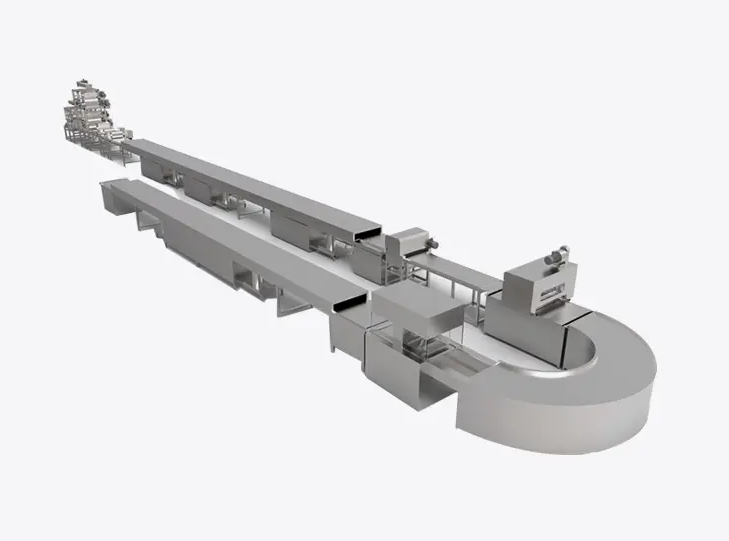
Choosing the Right Candy Bar Line: A Guide to the Best Types for Your Production
The production of candy bars involves various types of lines that cater to different needs in terms of production capacity, product variety, and process flexibility. Manufacturers choose the type of candy bar line based on factors such as production volume, product complexity, and operational efficiency.
1. Manual vs. Automated Candy Bar Lines
Manual Candy Bar Lines
In a manual candy bar line, many stages of production are operated by hand or with minimal automation. This type of line is often used by small-scale manufacturers or those producing artisanal, niche candy bars. Manual lines require more labor input and may be slower compared to automated systems but can offer flexibility in terms of producing custom or limited-edition products.
Pros: Low initial investment, flexibility in product variations, and a hands-on approach to quality control.
Cons: Slower production speeds, higher labor costs, and less consistency in product quality.
Automated Candy Bar Lines
An automated candy bar line uses advanced machinery and technology to handle most of the production process. Automation significantly increases production speed and consistency, which is crucial for large-scale manufacturers. These lines are capable of handling multiple stages of production without manual intervention, such as mixing, molding, coating, cooling, cutting, and packaging.
Pros: High efficiency, consistent product quality, reduced labor costs, and the ability to scale production.
Cons: High initial investment and potential maintenance costs.
Automated systems are ideal for companies that need to produce large quantities of candy bars while maintaining tight quality control.
Types of Candy Bar Lines
| Type | Description | Pros | Cons |
|---|---|---|---|
| Manual Candy Bar Lines | Production with minimal automation or manual input for each stage of production. Suitable for small-scale or artisanal production. | Low initial investment, flexibility for custom products, hands-on quality control. | Slower production, higher labor costs, less consistency. |
| Automated Candy Bar Lines | Fully automated systems that handle most production steps, including mixing, molding, coating, and packaging. | High efficiency, consistency in product quality, reduced labor costs, scalable for large production. | High initial investment, potential maintenance costs. |
2. Single-product vs. Multi-product Lines
Single-product Candy Bar Lines
A single-product candy bar line is dedicated to producing one type of candy bar throughout the entire production process. These lines are optimized for specific products, allowing manufacturers to streamline the production process and reduce the chances of contamination between different products.
Pros: High production efficiency, consistent quality for the specific candy bar, and minimal cross-contamination risks.
Cons: Limited flexibility for product diversification, and longer changeover times if a different candy bar needs to be produced.
Single-product lines are ideal for manufacturers who specialize in producing a single candy bar variety in large quantities, ensuring a more cost-effective and efficient operation.
Multi-product Candy Bar Lines
In contrast, a multi-product candy bar line is designed to handle a variety of candy bars, allowing manufacturers to switch between products without significant downtime. These lines offer greater flexibility, making it possible to produce different types of bars with varying ingredients, coatings, and flavors.
Pros: Greater versatility, ability to meet diverse market demands, and the option to introduce seasonal or limited-time offerings.
Cons: More complex setups, higher changeover costs, and the need for more precise cleaning to avoid cross-contamination.
Multi-product lines are ideal for manufacturers that want to diversify their product portfolio or respond quickly to changing consumer preferences.
Single-product vs. Multi-product Lines
| Type | Description | Pros | Cons |
|---|---|---|---|
| Single-product Candy Bar Lines | Dedicated production line for one type of candy bar. The system is optimized for consistent production of a specific product. | High efficiency, consistent quality, minimal contamination risks, simplified production process. | Limited flexibility, longer changeover times for new products. |
| Multi-product Candy Bar Lines | Flexible production line capable of handling various types of candy bars. Products may vary in size, shape, flavor, and ingredients, making it suitable for manufacturers offering a diverse product range. | Greater versatility, ability to respond to diverse market demands, produce limited-edition or seasonal varieties. | More complex setup, higher changeover costs, risk of cross-contamination. |
3. Continuous vs. Batch Processing Systems
Continuous Candy Bar Lines
A continuous candy bar line operates in a steady, uninterrupted flow. Raw ingredients are constantly fed into the system, and production continues without pause. This system is particularly suited for high-volume production where efficiency is key. Once the production process begins, it runs continuously, with minimal manual intervention.
Pros: High production capacity, lower labor costs, and reduced downtime.
Cons: Less flexibility, more complex maintenance, and difficulty adapting to product changes or customization.
Continuous lines are ideal for manufacturers that require large-scale, high-volume candy bar production with a focus on efficiency and output.
Batch Processing Candy Bar Lines
A batch processing system produces a specific quantity of candy bars in a set time period, after which the system is paused for setup, cleaning, and preparation for the next batch. This type of system offers more flexibility, allowing manufacturers to produce smaller quantities of various candy bar varieties.
Pros: More flexibility, ability to introduce different products in smaller quantities, and lower initial investment.
Cons: Slower production speed, increased downtime for setup and cleaning, and less efficient for large-scale production.
Batch processing systems are well-suited for manufacturers who need flexibility in their production schedules and want to produce different flavors or types of candy bars in smaller quantities.
Continuous vs. Batch Processing Systems
| Type | Description | Pros | Cons |
|---|---|---|---|
| Continuous Candy Bar Lines | Operates in an uninterrupted flow, with raw ingredients continuously fed into the system. Suitable for high-volume production. | High production capacity, lower labor costs, reduced downtime, efficient for large-scale production. | Less flexibility, more complex maintenance, difficulty in adapting to product changes. |
| Batch Processing Candy Bar Lines | Produces a set quantity of candy bars in a defined time period. The system is paused for setup and cleaning before starting a new batch. | Flexibility for different products, lower initial investment, ideal for small to medium runs of various candy bars. | Slower production speed, more downtime for changeovers, less efficient for large-scale production. |
4. Customization Options Based on Candy Bar Variants
One of the most significant benefits of a candy bar line is its ability to be customized according to different product variants. Whether it’s the flavor, size, shape, or packaging, a well-designed production line can adapt to various product specifications. Manufacturers can customize their lines to meet consumer demands for new and innovative candy bar types, such as:
Flavor Variations: Adjusting the type of coating, fillings, or even the base ingredient (e.g., chocolate, caramel, nougat).
Shape and Size Customization: The line can be reconfigured to produce different shapes and sizes, from bite-sized bars to large, premium versions.
Packaging Variations: The line can incorporate packaging machines that adjust to produce different wrapping designs, such as foil, plastic, or eco-friendly materials.
These customization options allow manufacturers to stay competitive in a rapidly changing market by introducing limited edition flavors, seasonal offerings, or products tailored to specific consumer preferences.
Customization Options Based on Candy Bar Variants
| Customization Type | Description | Examples of Customization | Benefits |
|---|---|---|---|
| Flavor Variations | Ability to adjust ingredients for different flavors and fillings such as chocolate, caramel, fruit, or nuts. | Custom coatings, filling combinations (e.g., nut or fruit fillings), premium flavors (e.g., organic, sugar-free). | Meets consumer demand for diverse flavors and product personalization. |
| Shape and Size Customization | Ability to produce different candy bar shapes and sizes, from regular-sized bars to mini or oversized bars. | Shapes ranging from rectangular to curved or shaped molds, varying sizes based on packaging preferences. | Product differentiation for various consumer preferences, marketability through unique shapes and sizes. |
| Packaging Variations | Adaptation to various packaging types, including eco-friendly and custom packaging. | Wrapping in foil, plastic, recyclable materials, or special packaging for premium products (e.g., individual wrappers or gift box sets). | Branding opportunities, eco-friendly options, protection of product integrity, consumer appeal. |
Why a Candy Bar Line is a Game-Changer for Your Confectionery Business
The production of candy bars has evolved significantly with the introduction of specialized candy bar lines. These systems streamline the entire manufacturing process, from ingredient preparation to packaging, providing numerous benefits that can boost efficiency, product quality, and overall profitability.
1. Increased Production Efficiency and Consistency
One of the most significant benefits of a candy bar line is the enhanced efficiency it brings to the production process. These automated systems are designed to handle various stages of production, from mixing ingredients to wrapping the finished product, without the need for manual intervention.
Efficiency Gains: With automated machinery, the production speed increases, allowing manufacturers to produce large quantities of candy bars in a shorter time frame. This results in higher output, reduced labor costs, and less downtime between production runs.
Consistency in Quality: Automated processes ensure uniformity in product size, texture, and appearance. With minimal human intervention, the likelihood of inconsistencies and errors is drastically reduced, ensuring that each candy bar meets the same high standards.
In industries where large-scale production and uniformity are essential, the candy bar line system is indispensable for maintaining consistency.
2. Cost-effectiveness and Time-saving
By investing in a candy bar line, manufacturers can optimize both production costs and time. The automation of multiple stages, including mixing, molding, cooling, and packaging, results in a reduction in labor costs and faster turnaround times.
Lower Labor Costs: Since many processes are automated, manufacturers can reduce the number of workers required to oversee production. This not only reduces the need for manual labor but also lowers training and staffing costs.
Time Savings: A candy bar line reduces the time spent on each stage of production, from ingredient mixing to packaging. The automated nature of the line enables continuous operation, reducing downtime between batches and speeding up the overall production process. This allows manufacturers to keep up with market demand, especially in high-volume production environments.
By streamlining the production process, companies can meet tight deadlines and lower operational costs, ultimately improving profitability.
3. Flexibility for Different Candy Bar Recipes
A candy bar line offers incredible flexibility, enabling manufacturers to create a wide range of candy bar types without the need for new equipment. This adaptability is essential for businesses that wish to diversify their product offerings or respond to changing consumer preferences.
Recipe Variations: Whether producing chocolate-covered bars, caramel-filled treats, or fruit-based confections, the candy bar line can be adjusted to handle various recipes. Different ingredients, such as fillings, coatings, and inclusions, can be easily incorporated into the production process.
Product Size and Shape Customization: The candy bar line can also be modified to create candy bars in various shapes and sizes, from mini bars to full-sized premium options. This level of customization allows manufacturers to cater to specific market segments, such as health-conscious consumers or those seeking indulgent, large-sized candy bars.
This flexibility allows businesses to stay competitive and innovate by producing different flavors, textures, and sizes that appeal to a broad consumer base.
4. Enhanced Product Quality and Safety
Ensuring high-quality products and adhering to food safety standards is a top priority in candy bar production. A candy bar line is equipped with systems that monitor and control various factors, including temperature, ingredient mixing, and hygiene standards, to maintain high-quality standards throughout the production process.
Consistent Quality Control: Automated systems in candy bar lines are equipped with sensors and control mechanisms that track the production process in real-time. This ensures that each batch meets the same quality standards in terms of flavor, texture, and size, which is crucial for building brand loyalty and customer satisfaction.
Food Safety: In addition to ensuring product consistency, candy bar lines help maintain food safety by reducing the risk of contamination during production. The use of clean-in-place (CIP) systems and hygienic designs minimizes the chances of contamination, keeping the product safe for consumption.
These lines are designed with strict adherence to food safety regulations, ensuring that each candy bar is produced in a clean and controlled environment, free from harmful contaminants.
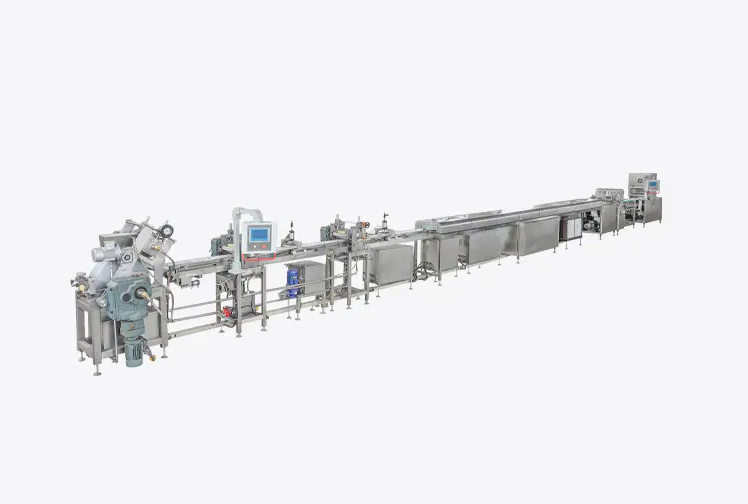
How to Choose the Perfect Candy Bar Line for Your Production Needs
Choosing the right candy bar line for your production needs is essential for ensuring operational efficiency, cost-effectiveness, and the ability to meet market demands. The decision involves several factors, from production capacity to customization options.
1. Key Factors to Consider: Production Capacity, Product Variety, and Customization
Production Capacity
One of the most important factors to consider when selecting a candy bar line is production capacity. The line should align with your current production needs and future growth. If you are looking to scale your operations or meet high-demand periods, a high-capacity system will be essential. However, if your production volumes are smaller, a more compact and flexible system might be sufficient.
Volume Requirements: If your business anticipates rapid growth or seasonal spikes in demand, you will need a candy bar line that can handle higher production volumes efficiently.
Flexibility in Batch Size: Some lines offer flexibility to produce both large and small batches, which is useful for experimenting with new recipes or introducing limited-edition products.
Product Variety and Customization
Different candy bars require different processing capabilities. A candy bar line must be able to accommodate the variety of products you intend to manufacture. This includes factors such as product size, shape, ingredients, and packaging.
Recipe Diversity: If you plan to produce multiple types of candy bars—such as chocolate-covered, caramel-filled, or fruit-based confections—the candy bar line should be adaptable enough to handle these variations without requiring extensive reconfiguration.
Customizable Features: The ability to customize the shape, size, coating, and fillings of the candy bars is essential for staying competitive. Look for lines that allow easy adjustments for different candy bar variants, as this will give you greater flexibility in responding to market trends.
Customization Options Based on Recipe and Packaging
Customization doesn't only apply to product features like size and shape; it also extends to packaging. Some candy bar lines allow manufacturers to choose from different packaging options, including eco-friendly materials, foil wrapping, and individual packaging for premium candy bars.
2. Balancing Efficiency and Cost
When selecting a candy bar line, it is crucial to find the right balance between production efficiency and cost. While higher efficiency often leads to increased output and reduced labor costs, it can also come with a higher initial investment.
Initial Investment vs. Long-Term Benefits: High-performance candy bar lines often come with a higher upfront cost. However, they may pay off in the long run by boosting production output, minimizing labor costs, and reducing waste. Consider the long-term savings when evaluating the total cost of ownership.
Operational Efficiency: Look for lines that maximize production efficiency while minimizing downtime and maintenance needs. Efficient candy bar lines should be able to run continuously with minimal interruptions, which is crucial for maintaining a steady supply of products without additional operational costs.
Energy Consumption: In today's environmentally-conscious market, energy-efficient systems can help you reduce your carbon footprint while saving on electricity costs. Consider the energy requirements of the candy bar line and weigh this against the overall production benefits.
By evaluating both short-term costs and long-term benefits, you can ensure that your candy bar line provides both efficient production and a favorable return on investment.
3. Importance of Supplier Reputation and After-Sales Support
Choosing the right supplier for your candy bar line is as important as selecting the right equipment. A reliable supplier offers not only high-quality machinery but also exceptional after-sales support. This ensures that your candy bar line runs smoothly and any potential issues are addressed promptly.
Supplier Reputation
A supplier's reputation can give you confidence in the quality and reliability of the candy bar line. It’s important to select a supplier that has a proven track record in delivering high-quality equipment and offering reliable service. A reputable supplier should also have experience in the confectionery industry and be able to provide case studies or testimonials from satisfied clients.
Customer Reviews and References: Checking customer reviews, testimonials, and references can help you gauge the supplier's reliability and customer satisfaction level.
Industry Expertise: A supplier with deep industry expertise will be able to offer valuable insights and guidance throughout the selection process, helping you make an informed decision that aligns with your production goals.
After-Sales Support
After purchasing a candy bar line, it's critical to have strong after-sales support, including technical assistance, machine maintenance, and training. A supplier should offer clear terms for warranty, service contracts, and troubleshooting.
Training and Setup Assistance: A good supplier will provide training to ensure your team can operate the candy bar line effectively and safely. Some suppliers may even assist in setting up the machinery on-site to guarantee optimal performance.
Maintenance and Spare Parts: Regular maintenance is necessary to keep the candy bar line running efficiently. A reliable supplier will provide ongoing maintenance services and readily available spare parts, minimizing production downtime in case of repairs.
Technical Support: A responsive technical support team is crucial for quickly addressing any machine malfunctions or production issues that may arise. Ensure that the supplier offers robust support, either on-site or remotely, to resolve any challenges.
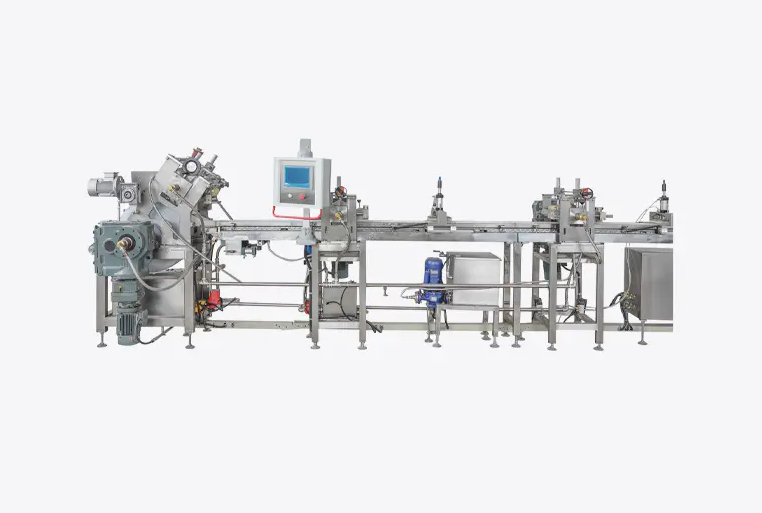
Candy Bar Lines of Tomorrow: Trends, Innovations, and the Future Ahead
The confectionery industry is constantly evolving to meet consumer demands and adapt to new technological advancements. Candy bar lines, as essential production systems in the candy manufacturing process, are also undergoing significant changes. These changes are driven by trends such as sustainability, consumer preferences, and the integration of advanced technologies like automation and AI.
1. Sustainable Manufacturing and Eco-friendly Materials
As sustainability becomes increasingly important across industries, the confectionery sector is also focusing on reducing its environmental impact. For candy bar lines, this translates to innovations in energy-efficient production processes and the use of eco-friendly materials throughout manufacturing.
Sustainable Manufacturing Practices
Manufacturers are placing more emphasis on sustainable manufacturing techniques that minimize waste, conserve energy, and reduce emissions. Innovations in candy bar lines are allowing for cleaner production methods that use fewer resources and generate less environmental impact.
Energy Efficiency: New technologies in candy bar lines aim to optimize energy consumption during production. This includes the integration of energy-efficient motors, advanced heating and cooling systems, and processes that minimize energy wastage.
Waste Reduction: By streamlining the production process and utilizing automated waste management systems, manufacturers are reducing raw material wastage. This not only makes the production process more sustainable but also cuts costs by optimizing resource use.
Eco-friendly Materials
The demand for eco-friendly and biodegradable packaging materials is growing, with consumers becoming more conscious of the environmental impact of plastic packaging. In response, candy bar lines are being designed to handle sustainable packaging materials, such as compostable wrappers or recyclable options, to meet these expectations.
Biodegradable Packaging: Advances in packaging technology enable candy bar lines to integrate materials that break down more easily, reducing the overall environmental footprint of the candy bar industry.
2. Consumer Preferences and Product Innovation
Consumer preferences are continuously shifting, and candy manufacturers need to stay ahead of these changes to maintain competitiveness. As more people seek healthier, indulgent, or innovative candy options, candy bar lines are being adapted to create new product formats and cater to a diverse set of needs.
Health-Conscious Candy Bars
With growing health awareness among consumers, candy manufacturers are responding by creating healthier candy options. Low-sugar, high-protein, and even plant-based candy bars are becoming increasingly popular. Candy bar lines are evolving to accommodate these healthier alternatives.
Alternative Ingredients: These new products often feature ingredients such as plant-based proteins, natural sweeteners, and organic components. The flexibility of candy bar lines makes it easier to introduce these ingredients into the production process without sacrificing quality or consistency.
Nutritional Value: As consumers demand products with better nutritional profiles, candy bar lines can incorporate features like high-fiber fillings, fortified snacks, and clean-label ingredients that appeal to health-conscious buyers.
Indulgent and Premium Products
On the other hand, there remains a strong demand for indulgent, premium candy bars. As a result, many manufacturers are focusing on creating luxurious candy bars with high-quality ingredients like single-origin chocolate, nuts, or exotic flavors. Candy bar lines are being adapted to handle the delicate handling required for premium products.
Premium Fillings and Coatings: Manufacturers are experimenting with high-end fillings such as caramel, nougat, and truffles. Candy bar lines are being designed to handle these complex fillings while maintaining smooth production flow.
Customization and Personalization
Consumers today expect personalized products, and this trend is making its way into the candy industry. Customizable candy bar options, from different flavors to unique packaging designs, are on the rise. Candy bar lines are being designed with flexibility to handle these custom variations.
Limited Edition Flavors: Seasonal or limited-edition flavors, such as pumpkin spice or salted caramel, are becoming increasingly popular. Candy bar lines that allow for easy switching between recipes and flavors can give manufacturers an edge in meeting changing consumer preferences.
3. The Impact of Automation and AI on Future Candy Bar Production
Technological advancements in automation and artificial intelligence (AI) are dramatically reshaping the manufacturing landscape, including for candy bar lines. As these technologies become more integrated into production systems, they offer several benefits, such as improved efficiency, higher production quality, and smarter decision-making.
Automation for Enhanced Efficiency
Automation is already a key component in modern candy bar lines, but as technology continues to improve, the level of automation is expected to increase further. This means even less manual intervention, reducing labor costs, minimizing errors, and improving the speed and efficiency of production.
Increased Output: Fully automated candy bar lines can run 24/7 with minimal breaks, significantly increasing production capacity without compromising quality. This is particularly important for large-scale manufacturers looking to meet high consumer demand.
Improved Precision: Automated systems allow for better precision in measuring ingredients, cutting bars to the exact size, and wrapping products uniformly. This enhances product consistency and reduces waste.
Artificial Intelligence in Quality Control
AI has the potential to revolutionize quality control in candy bar lines. Machine learning and AI algorithms can continuously monitor production parameters in real-time, analyzing factors such as temperature, humidity, and ingredient consistency. This allows for immediate adjustments to prevent defects and ensure that each candy bar meets the desired quality standards.
Predictive Maintenance: AI can also predict when a part of the candy bar line is likely to fail, allowing manufacturers to perform maintenance before a problem occurs, reducing downtime and extending the lifespan of the equipment.
Data-Driven Insights
With the help of data analytics, manufacturers can gain insights into their production processes, from ingredient optimization to packaging efficiency. By tracking key performance indicators (KPIs), candy bar lines can be fine-tuned to maximize both output and profitability.
Real-time Data Analytics: Data analytics tools allow for ongoing monitoring of production efficiency, helping manufacturers identify bottlenecks, optimize processes, and improve overall performance.
As we’ve explored throughout this article, candy bar lines play a pivotal role in the modern confectionery industry, shaping production processes, enhancing efficiency, and meeting evolving consumer demands. From the essential components of a candy bar line to the advancements in automation and energy efficiency, it is clear that these production systems are integral to delivering high-quality, consistent products at scale.
The benefits of using a candy bar line, including increased production efficiency, cost-effectiveness, and enhanced product quality, are undeniable. However, like any manufacturing process, there are challenges that must be addressed, such as maintaining quality consistency, handling equipment maintenance, and adapting to market fluctuations. With careful selection and strategic planning, these challenges can be managed to ensure the continued success of your production operations.
As consumer preferences evolve and the industry leans toward more sustainable and innovative practices, the future of candy bar lines looks promising. Technological innovations, such as automation, robotics, and AI integration, are set to further streamline production, boost efficiency, and offer new opportunities for customization.
At Gusu Food Processing Machinery Suzhou Co., Ltd., we specialize in providing state-of-the-art candy bar production lines designed to meet the diverse needs of the confectionery industry. Our machines are built with the latest technological advancements, ensuring your production runs efficiently and produces high-quality candy bars consistently. We are committed to helping you stay ahead of the competition and meet the demands of an ever-evolving market.
We invite you to explore our wide range of machinery solutions and see how our candy bar lines can transform your production process. Whether you’re looking for automated solutions, increased flexibility, or cutting-edge sustainability features, Gusu Food Processing Machinery Suzhou Co., Ltd. is here to support your success in the confectionery business.



 English
English Español
Español



